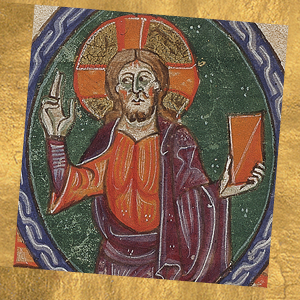Sts. Andrew Kim Taego˘n, Paul Chông Hasang and Companions, Korean Martyrs
An unlikely beginning
When, around the year 1777, a small group of Korean scholars began to study Christian writings brought into their country from China, something happened that is difficult to explain as anything other than a work of God. A spark was ignited. Pondering the words, some were “cut to the heart,” like the crowds listening to the apostles in Jerusalem (cf. Acts 2:37). In 1784, one of them traveled to China, found a priest, and asked for baptism. When he returned to his country, the spark became a fire. Person to person, friend to friend, this new faith spread.
A Chinese priest was finally able to visit Korea in 1794. There, he found 4,000 believers! In fifty years, this community, poor in the sacraments but rich in faith, grew to 10,000.
Korean authorities were not pleased by this “foreign” religion. The authorities’ cruelty was great, but the faith of these new believers was greater, for in them was a fire, a love and a life that did not have its source in man.
The priest
Taegon Kim, baptized Andrew at age 15, had that faith in him. It carried him 1,200 miles to Macau to study for the priesthood. The French missionary bishop who ordained him was filled with joy to see the zeal of this young Christian. After ordination in Shanghai, the first native Korean priest returned home.
To be a Christian in Korea was not for the fainthearted. Most of the men in Andrew’s family had been martyred. Christianity was outlawed. But Fr. Andrew, exhorting his fellow believers, articulated what many of them already knew in their hearts: “We have received baptism… and the honor of being called Christians. Yet what good will this do us if we are Christians in name only and not in fact?” To be Christian in fact in Korea meant to be ready at any moment to witness to Christ with one’s life.
Andrew did so in 1846. At age 25, this young priest was tortured and beheaded. Before he died, he exhorted his executioners: “If I have held communication with foreigners, it has been for my religion and my God. It is for Him that I die. My immortal life is on the point of beginning. Become Christians if you wish to be happy after death!”
The lay apostle
The nephew of one of the most noteworthy Korean philosophers of his day, Hasang Chong, baptized Paul, knew even at age seven what honor he bore in being called Christian. In that year, his older brother and father died martyrs. Paul became a government interpreter, which allowed him to travel to China. In Beijing, he became a spokesman for his fellow Christians, even writing to the Pope to ask for an apostolic vicariate be established in Korea for the care of the faithful. In 1825, Pope Gregory XVI did as Paul requested.
There were too many martyrs in his family for Paul not to be aware that this fate likely lay in store for him, too. When he was finally tried in 1839, he handed a written defense of the faith to his judge. The judge was impressed: “You are right in what you have written, but the king has forbidden this religion, and it is your duty to renounce it.” Paul’s answer? “I have told you that I am a Christian. I will be one until my death.”
“The honor of being called Christians”
The martyrs numbered 10,000 in less than a hundred years. Most were laypeople. Some were catechists, others noblemen, still others housewives. One boy, Peter, whose flesh was so torn he could throw pieces of it at his torturers, was thirteen. A woman, Columba, was asked before she was tortured why she and her sisters did not marry. She answered, “In order to cherish our body and heart in all purity, to serve and worship God….” They knew the honor of bearing the name of Christian.
There was a fire in the hearts of these courageous believers. It was passed on person to person, heart to heart, and it continues burning: South Korea boasts the fastest growing Catholic population in the world. In 1984, Pope John Paul II canonized Fr. Andrew Kim, Paul Chong, and 101 of their companion martyrs.








